BloostonLaw Telecom Update Published by the Law Offices of Blooston, Mordkofsky, Dickens, Duffy & Prendergast, LLP [Reproduced here with the firm's permission.] www.bloostonlaw.com | | Vol. 12, No. 23 | JUNE 10, 2009 |
Comment Sought On Competitive Provision Of 911 Service
The FCC has asked for comment on a specific policy issue that has arisen in the context of the consolidated arbitration proceedings between Intrado Communications, Embarq, and Verizon. On June 4, 2008, the Wireline Competition Bureau preempted the jurisdiction of the Virginia Commission with respect to the arbitration of an interconnection agreement between Intrado and Embarq. On October 16, 2008, the Bureau preempted the jurisdiction of the Virginia Commission with respect to the arbitration of an interconnection agreement between Intrado and Verizon. Intrado filed separate petitions for arbitration of interconnection agreements with both Embarq and Verizon, and on December 9, 2008, the Bureau consolidated the proceedings. In its petitions, Intrado sought physical interconnection with Embarq and Verizon to offer emergency services in Virginia, including a competitive alternative to the 911 network currently provided to Public Safety Answering Points (PSAPs) and other public safety agencies by Embarq and Verizon, in their respective territories in Virginia. While Intrado’s petitions raise a number of contractual issues specific to Intrado, Embarq, and Verizon, the arbitration proceeding also has raised the more general policy issue of the competitive provision of 911 voice services. Resolution of that issue in the context of this arbitration proceeding could have a significant impact on persons and entities that are not parties to the proceedings, including PSAPs, competitive carriers, Commercial Mobile Radio Services (CMRS) providers, and others. Therefore, the FCC seeks comment on the specific issue of how competition in the provision of the 911 network to the PSAPs and other public safety agencies would impact the provision of public safety services in Virginia. Comments in this WC Docket Nos. 08-33, 08-185 proceeding are due July 6, and replies are due July 21. BloostonLaw contacts: Hal Mordkofsky, Ben Dickens, John Prendergast, Richard Rubino, and Cary Mitchell. |
The Senate Commerce Committee has scheduled a June 16 confirmation hearing on the nominations of Julius Genachowski to be FCC Chairman and Robert McDowell to be reappointed as FCC Commissioner. It is not clear when the panel will take up the nominations of Mignon Clyburn and Meredith Atwell Baker to fill the remaining seats on the FCC. INSIDE THIS ISSUE - RUS FY 2009 broadband community connect grant program opens June 19.
- NTIA, NHTSA publish E-911 grant pro-gram for states.
- FCC seeks comments on changing Form 499-A filing date to September 1.
- Denali asks FCC to forbear from applying unjust enrichment provisions to competitive bidding rules.
- VITAL MEETINGS & DEADLINES.
|
REMINDER: RUS FY 2009 Broadband Community Connect Grant Program Opens June 19 This is a reminder that the Rural Utilities Service (RUS) fiscal year (FY) 2009 application window for its Community Connect Grant Program opens June 19. You may submit completed applications for grants on paper or electronically according to the following deadlines: Paper copies must carry proof of shipping no later than June 19, 2009, to be eligible for FY 2009 grant funding. Late applications are not eligible for FY 2009 grant funding. Electronic copies must be received by June 19, 2009, to be eligible for FY 2009 grant funding. BloostonLaw is available to assist clients with preparing applications for Community Connect grants. 1. Funding Opportunity: The purpose of the Community Connect Grant Program is to provide financial assistance in the form of grants to eligible applicants that will provide currently unserved areas, on a “community-oriented connectivity” basis, with broadband transmission service that fosters economic growth and delivers enhanced educational, health care, and public safety services. Rural Utilities Service will give priority to rural areas that it believes have the greatest need for broadband transmission services, based on certain criteria. Grant authority will be used for the deployment of broadband transmission service to extremely rural, lower-income communities on a “community-oriented connectivity'' basis. 2. Award Information: $13,406,000 is available for grants. The Administrator has established a minimum grant amount of $50,000 and a maximum grant amount of $1,000,000 for FY 2009. This funding is separate from the ARRA stimulus money to be administered by RUS once rules are implemented. 3. Eligibility Information: Only entities legally organized as one of the following are eligible for Community Connect Grant Program financial assistance: A. An incorporated organization, B. An Indian tribe or tribal organization, as defined in 25 U.S.C. 450b(b) and (c), C. A State or local unit of government, D. A cooperative, private corporation or limited liability company organized on a for-profit or not-for-profit basis. Note: Individuals are not eligible for Community Connect Grant Program financial assistance directly. Applicants must have the legal capacity and authority to own and operate the broadband facilities as proposed in its application, to enter into contracts and to otherwise comply with applicable federal statutes and regulations.
4. What are the basic eligibility requirements for a project? A. Grant applicants must demonstrate a matching contribution, in cash or in kind (new, non-depreciated items), of at least 15 percent of the total amount of financial assistance requested. Matching contributions must be used for eligible purposes of Community Connect grant assistance. B. To be eligible for a grant, the Project must: a. Serve a Rural Area where Broadband Transmission Service does not currently exist, to be verified by Rural Development prior to the award of the grant; b. Serve one Community recognized in the latest U.S. Census or the latest version of the Rand McNally Atlas; c. Deploy Basic Broadband Transmission Service, free of all charges for at least 2 years, to all Critical Community Facilities located within the proposed Service Area; d. Offer Basic Broadband Transmission Service to residential and business customers within the proposed Service Area; and e. Provide a Community Center with at least 10 Computer Access Points within the proposed Service Area, and make Broadband Transmission Service available therein, free of all charges to users for at least 2 years.
5. Funding Restrictions: A. Eligible Grant Purposes
Grant funds may be used to finance: a. The construction, acquisition, or leasing of facilities, including spectrum, to deploy Broadband Transmission Service to all participating Critical Community Facilities and all required facilities needed to offer such service to residential and business customers located within the proposed Service Area; b. The improvement, expansion, construction, or acquisition of a Community Center that furnishes free access to broadband Internet service, provided that the Community Center is open and accessible to area residents before, during, and after normal working hours and on Saturday or Sunday. Grant funds provided for such costs shall not exceed the greater of five percent (5%) of the grant amount requested or $100,000; c. End-User Equipment needed to carry out the Project; d. Operating expenses incurred in providing Broad-band Transmission Service to Critical Community Facilities for the first 2 years of operation and in providing training and instruction; and e. The purchase of land, buildings, or building construction needed to carry out the Project.
B. Ineligible Grant Purposes a. Grant funds may not be used to finance the duplication of any existing Broadband Transmission Service provided by another entity. b. Facilities financed with grant funds cannot be utilized, in any way, to provide local exchange telecommunications service to any person or entity already receiving such service.
6. Reporting: All recipients of Community Connect Grant Program financial assistance must provide annual performance activity reports to Rural Development until the project is complete and the funds are expended. A final performance report is also required; the final report may serve as the last annual report. The final report must include an evaluation of the success of the project. BloostonLaw contacts: Hal Mordkofsky, Ben Dickens, Gerry Duffy and John Prendergast, Mary Sisak, and Cary Mitchell. NTIA, NHTSA Publish E-911 Grant Program For States The National Telecommunications and Information Ad-ministration (NTIA) and the National Highway Traffic Safety Administration (NHTSA) have published a joint Final Rule implementing the E-911 grant program authorized under the Ensuring Needed Help Arrives Near Callers Employing 911 (ENHANCE 911) Act of 2004. The Act authorizes grants to the states for the implementation and operation of Phase II enhanced 911 services and for migration to an Internet Protocol (IP)-enabled emergency network. To qualify for a grant, an applicant must submit a State 911 plan and project budget, designate an E-911 coordinator, and certify, among other things, that the State and other taxing jurisdictions within the State have not diverted E-911 charges for any other purpose within 180 days preceding the application date. This Final Rule, which became effective June 5, establishes the requirements an applicant must meet and the procedures it must follow to receive an E-911 grant. While the E911 grant program is limited to government entities, it may indirectly benefit our clients who may be working with their state governments to implement public safety communications capabilities. More specifically, the ENHANCE 911 Act directs NHTSA and NTIA to issue joint implementing regulations pre-scribing the criteria for selection for grants. The Act establishes certain minimum requirements for grant applications. An applicant must provide at least 50 percent of the cost of a project from non-Federal sources. In addition, an applicant must certify that it has coordinated its application with the public safety answering points (PSAPs) located within the jurisdiction; that the State has designated a single officer or governmental body to serve as the coordinator of implementation of E-911 services; that it has established a plan for the coordination and implementation of E-911 services; and that it has integrated telecommunications services involved in the implementation and delivery of Phase II E-911 services. The Act also requires applicants to certify that no portion of any designated E-911 charges imposed by the State or other taxing jurisdiction within the State is being or will be obligated or expended for any purpose other than E-911 purposes during the period at least 180 days immediately preceding the date of the application and continuing throughout the time grant funds are available to the applicant. Applicants must agree to return any grant awarded if the State or other taxing jurisdiction diverts designated E-911 charges during the time period that grant funds are available. Finally, applicants that knowingly provide false information on the certification are not eligible to receive grant funds and must return any grant funds awarded. The total amount of E-911 grant funds available is $41,325,000. The funding ranges between $500,000 and $2.8 million per state. Only eight states are allocated more than $1 million, with Texas and California eligible for $2.7 million and $2.8 million, respectively. BloostonLaw contacts: Hal Mordkofsky, Ben Dickens, Gerry Duffy, and John Prendergast. FCC SEEKS COMMENTS ON CHANGING FORM 499-A FILING DATE TO SEPTEMBER 1: The FCC has asked for comments on Alexicon Telecommunications Consulting’s petition requesting that the Commission change the annual filing deadline for the Annual Tele-communications Reporting Worksheet (FCC Form 499-A) filing deadline from April 1 to September 1 of each year (BloostonLaw Telecom Update, April 29). Alexicon believed changing this reporting deadline to September 1 would lead to less administrative burdens for rate-of-return regulated companies as well as Commission staff. Changing the current deadline will allow small companies to complete their annual financial audits before the re-porting deadline, which is an issue many of these companies are facing today, Alexicon said. In addition, moving the deadline would not only assist small companies (with limited staff) in allowing them to complete many other reporting deadlines already in place during the first quarter of each calendar year but would also necessitate these companies having to re-file this report due to incomplete prior period audited financial reporting. The FCC has placed this petition on Public Notice in WC Docket No. 06-122. Comments are due July 6, and replies are due July 20. BloostonLaw contacts: Hal Mordkofsky, Ben Dickens, Gerry Duffy, and John Prendergast. DENALI ASKS FCC TO FORBEAR FROM APPLYING UNJUST ENRICHMENT PROVISIONS TO COMPETI-TIVE BIDDING RULES: The FCC seeks comments on the petition filed by Denali Spectrum License Sub, LLC asking the Commission to forbear from applying the unjust enrichment provisions of the competitive bidding rules. Comments in this WT Docket No. 09-64 proceeding are due June 18, and reply comments are due July 6. The Commission has adopted unjust enrichment rules, which require a designated entity (DE) that has benefited from bidding credits to return some or all of those benefits if it transfers its license to a non-DE or otherwise loses its eligibility for such benefits. In 2006, the Commission revised its unjust enrichment rules, extending from five years to ten years the period during which a DE will have to repay some or all of its bidding credits if it loses eligibility for those benefits. Section 1.2111(d)(2)(i) of the Commission's rules, 47 CFR 1.2111(d)(2)(i), provides a prorated schedule for licensees that lose their eligibility for a bidding credit and were initially granted their licenses after April 25, 2006, to repay that biding credit. Denali asks that the Commission forbear from applying 47 CFR 1.2111(d)(2)(i) to it in light of the prevailing economic conditions, Denali's need for additional capital to fund network deployment, and the opportunity for Denali to create jobs and extend its state-of-the-art network to under-served low income and other segments of the population. Denali asserts that forbearance from applying the unjust enrichment provisions would be consistent with recent Federal initiatives intended to stimulate the national economy and promote investment. Denali also states that as a condition on the grant of its forbearance request, it will adhere to the less stringent unjust enrichment provisions that apply to licenses granted prior to April 25, 2006. BloostonLaw contacts: Hal Mordkofsky, John Prendergast, and Cary Mitchell. WYDEN, SNOWE INTRODUCE “MOBILE WIRELESS TAX FAIRNESS ACT”: U.S. Senators Ron Wyden (D-Ore.) and Olympia Snowe (R-Maine) have introduced the Mobile Wireless Tax Fairness Act of 2009 (S. 1192), which restricts any state or local jurisdiction from imposing a new discriminatory tax on mobile wireless communications services, providers, or property during a five-year period from the date of enactment of the bill. The average tax rate for goods and services is 7.07 percent, but federal, state and local taxes make up 15.9 percent of the average wireless bill, according to figures from Phoenix Business Journal. Between January 2003 and January 2007, the effective tax rate on wireless services increased four times faster than the rate for other taxable goods. The measure is similar to the Cell Tax Fairness Act (H.R. 1521), which was introduced in the House earlier this year. BloostonLaw contacts: Hal Mordkofsky, John Prendergast, and Cary Mitchell. JUNE 30: ANNUAL ICLS USE CERTIFICATION. Rate of return carriers and CETCs must file a self-certification with the FCC and the Universal Service Administrative Company (USAC) stating that all Interstate Common Line Support (ICLS) and Long Term Support (LTS) will be used only for the provision, maintenance, and upgrading of facilities and services for which the support is in-tended. In other words, carriers are required to certify that their ICLS and LTS support is being used consistent with Section 254(e) of the Communications Act. Failure to file this self-certification will preclude the carrier from receiving ICLS support. We, therefore, strongly recommend that clients have BloostonLaw submit this filing and obtain an FCC proof-of-filing receipt for client records. BloostonLaw contacts: Ben Dickens, Gerry Duffy, and Mary Sisak. JULY 10: DTV EDUCATION REPORT. New 700 MHz licensees from Auction No. 73 are required to file a report with the FCC concerning their efforts to educate consumers about the upcoming transition to digital television (DTV). Last summer, we explained that the FCC’s Part 27 rules require 700 MHz licensees that won licenses in Auction No. 73 to file quarterly reports on their DTV consumer outreach efforts through the Spring of 2009. However, in an apparent contradiction, the same rules do not impose any substantive consumer education requirements on 700 MHz license holders. This situation has not changed. The reporting rule simply states that “the licensee holding such authorization must file a report with the Commission indicating whether, in the previous quarter, it has taken any outreach efforts to educate consumers about the transition from analog broadcast television service to digital broadcast television service (DTV) and, if so, what specific efforts were undertaken.” Many licensees may not have initiated 700 MHz service as of yet. However, to the extent they are also an Eligible Telecommunications Carrier (ETC) and recipient of federal USF funds, separate FCC rules found in 47 C.F.R. Part 54 (Universal Service) require ETCs to send monthly DTV transition notices to all Lifeline/Link-Up customers (e.g., as part of their monthly bill), and to include information about the DTV transition as part of any Lifeline or Link-Up publicity campaigns until June 30, 2009. BloostonLaw contacts: Hal Mordkofsky and Cary Mitchell. JULY 20: FCC FORM 497, LOW INCOME QUARTER-LY REPORT. This form, the Lifeline and Link-Up Work-sheet, must be submitted to the Universal Service Administrative Company (USAC) by all eligible telecommunications carriers (ETCs) that request reimbursement for participating in the low-income program. The form must be submitted by the third Monday after the end of each quarter. It is available at: www.universalservice.org. BloostonLaw contacts: Ben Dickens, Gerry Duffy, and Mary Sisak. JULY 31: FCC FORM 507, UNIVERSAL SERVICE QUARTERLY LINE COUNT UPDATE. Line count up-dates are required to recalculate a carrier's per line universal service support, and is filed with the Universal Service Administrative Company (USAC). This information must be submitted on July 31 each year by all rate-of-return incumbent carriers, and on a quarterly basis if a competitive eligible telecommunications carrier (CETC) has initiated service in the rate-of-return incumbent carrier’s service area and reported line count data to USAC in the rate-of-return incumbent carrier’s service area, in order for the incumbent carrier to be eligible to receive Interstate Common Line Support (ICLS). This quarterly filing is due July 31 and covers lines served as of December 31, 2007. Incumbent carriers filing on a quarterly basis must also file on September 30 (for lines served as of March 31, 2008); December 30 (for lines served as of June 30, 2008), and March 31, 2009, for lines served as of September 30, 2008). BloostonLaw contacts: Ben Dickens, Gerry Duffy, and Mary Sisak. JULY 31: FCC FORM 525, COMPETITIVE CARRIER LINE COUNT QUARTERLY REPORT. Competitive eligible telecommunications carriers (CETCs) are eligible to receive high cost support if they serve lines in an incumbent carrier’s service area, and that incumbent carrier receives high cost support. CETCs are eligible to receive the same per-line support amount received by the incumbent carrier in whose study area the CETC serves lines. Unlike the incumbent carriers, CETCs will use FCC Form 525 to submit their line count data to the Universal Service Administrative Company (USAC). This quarterly report must be filed by the last business day of March (for lines served as of September 30 of the previous year); the last business day of July (for lines served as of December 31 of the previous year); the last business day of September (for lines served as of March 31 of the current year); and the last business day of December (for lines served as of June 30 of the current year). CETCs must file the number of working loops served in the service area of an incumbent carrier, disaggregated by the incumbent carrier’s cost zones, if applicable, for High Cost Loop (HCL), Local Switching Support (LSS), Long Term Support (LTS), and Interstate Common Line Support (ICLS). ICLS will also require the loops to be reported by customer class as further described below. For Interstate Access Support (IAS), CETCs must file the number of working loops served in the service area of an incumbent carrier by Unbundled Network Element (UNE) zone and customer class. Working loops provided by CETCs in ser-vice areas of non-rural incumbents receiving High Cost Model (HCM) support must be filed by wire center or other methodology as determined by the state regulatory authority. CETCs may choose to complete FCC Form 525 and submit it to USAC, or designate an agent to file the form on its behalf. BloostonLaw contacts: Ben Dickens, Gerry Duffy, and Mary Sisak. JULY 31: REPORT OF EXTENSION OF CREDIT TO FEDERAL CANDIDATES. This report (in letter format) must be filed by January 30 and July 31 of each year, but ONLY if the carrier extended unsecured credit to a candidate for a Federal elected office during the reporting period. BloostonLaw contacts: Hal Mordkofsky, John Prendergast, and Richard Rubino. AUGUST 1: FTC BEGINS ENFORCEMENT OF RED FLAG RULES. The Federal Trade Commission (FTC) has delayed enforcement of the “Red Flag” Rules for 90 days until August 1, 2009, to give creditors and financial institutions additional time to implement identity theft pro-grams. Under the new rules, all businesses that maintain a creditor-debtor relationship with customers, including virtually all telecommunications carriers (but other companies as well), must adopt written procedures designed to detect the relevant warning signs of identity theft, and implement an appropriate response. The Red Flag compliance program was in place as of November 1, 2008. But the FTC will not enforce the rules until August 1, 2009, meaning only that a business will not be subject to enforcement action by the FTC if it de-lays implementing the program until August 1. The FTC announcement does not affect other federal agencies’ enforcement of the original Nov. 1, 2008, compliance deadline for institutions subject to their oversight. Other liabilities may be incurred if a violation occurs in the meantime. The requirements are not just binding on telcos and wireless carriers that are serving the public on a common carrier basis. They also apply to any “creditor” (which includes entities that defer payment for goods or services) that has “covered accounts” (ac-counts used mostly for personal, family or household purposes). This also may affect private user clients, as well as many telecom carriers’ non-regulated affiliates and subsidiaries. BloostonLaw has prepared a Red Flag Compliance Manual to help your company achieve compliance with the Red Flag Rules. Please contact Gerry Duffy (202-828-5528) or Mary Sisak (202-828-5554) with any questions or to request the manual. AUGUST 3: FCC FORM 499-Q, TELECOMMUNICA-TIONS REPORTING WORKSHEET. All telecommunications common carriers that expect to contribute more than $10,000 to federal Universal Service Fund (USF) support mechanisms must file this quarterly form. (Normally this form is due on August 1, but because August 1 falls on a Saturday this year, the next business day is Monday, August 3.) This filing requirement also applies to certain Private Mobile Radio Service (PMRS) licensees, such as for-profit paging and messaging, dispatch and two-way mobile radio services. The FCC has modified this form in light of its recent decision to establish interim measures for USF contribution assessments. The form contains revenue information from the prior quarter plus projections for the next quarter. Form 499-Q relates only to USF contributions. It does not relate to the cost recovery mechanisms for the Telecommunications Relay Service (TRS) Fund, the North American Numbering Plan Administration (NANPA), and the shared costs of local number portability (LNP), which are covered in the annual form (Form 499-A) that was due April 1. For-profit private radio service providers that are “de minimis” (those that contribute less than $10,000 per year to the USF) do not have to file the 499-A or 499-Q. However, they must fill out the form and retain the relevant calculations as well as documentation of their contribution base revenues for three years. De minimis telecom carriers must actually file the Form 499A, but not the 499Q. BloostonLaw contacts: Ben Dickens, Gerry Duffy, and Mary Sisak. AUGUST 3: FCC FORM 502, NUMBER UTILIZATION AND FORECAST REPORT: Any wireless or wireline carrier (including paging companies) that have received number blocks—including 100, 1,000, or 10,000 number blocks—from the North American Numbering Plan Administrator (NANPA), a Pooling Administrator, or from another carrier, must file Form 502 by August 3. (Normally, this filing would be due August 1, but this year August 1 falls on a Saturday, and agency rules require the filing be submitted the first business day thereafter.) Carriers porting numbers for the purpose of transferring an established customer’s service to another service provider must also report, but the carrier receiving numbers through porting does not. Resold services should also be treated like ported numbers, meaning the carrier transfer-ring the resold service to another carrier is required to report those numbers but the carrier receiving such numbers should not report them. New this year is that reporting carriers are required to include their FCC Registration Number (FRN). Reporting carriers file utilization and forecast reports semiannually on or before February 1 for the preceding six-month reporting period ending December 31, and on or before August 1 for the preceding six-month reporting period ending June 30. BloostonLaw contacts: Ben Dickens, Gerry Duffy, and Mary Sisak. SEPTEMBER 1: COPYRIGHT STATEMENT OF ACCOUNTS. The Copyright Statement of Accounts form plus royalty payment for the first half of calendar year 2009 is due to be filed September 1 at the Library of Congress’ Copyright Office by cable TV service providers. BloostonLaw contact: Gerry Duffy. SEPTEMBER 1: FCC FORM 477, LOCAL COMPETITION AND BROADBAND REPORTING FORM. In its June 12, 2008 WC Docket No. 07-38 Form 477 Report & Order and Further Notice of Proposed Rulemaking (FNPRM) to improve data collection, the Commission modified Form 477 to require broadband providers to report the number of broadband connections in service in individual Census Tracts. In order to generate an even more complete picture of broadband adoption in the United States, it proposed additional methods to add to the data reported by Form 477 filers, including a voluntary household self-reporting system, and a recommendation to the Census Bureau that the American Community Survey questionnaire be modified to gather information about broadband availability and subscription in house-holds. To further improve the quality of collected data, the FCC adopted three additional changes to FCC Form 477. First, it now requires broadband service providers to report data on broadband service speed in conjunction with subscriber counts according to new categories for download and upload speeds. These new speed tiers will better identify services that support advanced applications. Second, it amended reporting requirements for mobile wireless broadband providers to require them to report the number of subscribers whose data plans allow them to browse the Internet and access the Internet con-tent of their choice. Finally, it required providers of inter-connected Voice over Internet Protocol (VoIP) service to report subscribership information on Form 477. Then, on reconsideration, it added a requirement that filers include the percentage of residential broadband connections. Who Must File Form 477: Three types of entities must file this form. (1) Facilities-based Providers of Broad-band Connections to End User Locations: Entities that are facilities-based providers of broadband connections – which are wired “lines” or wireless “channels” that enable the end user to receive information from and/or send information to the Internet at information transfer rates exceeding 200 kbps in at least one direction – must complete and file the applicable portions of this form for each state in which the entity provides one or more such connections to end user locations. For the purposes of Form 477, an entity is a “facilities-based” provider of broadband connections to end user locations if it owns the portion of the physical facility that terminates at the end user location, if it obtains unbundled network elements (UNEs), special access lines, or other leased facilities that terminate at the end user location and provisions/equips them as broadband, or if it provisions/equips a broadband wireless channel to the end user location over licensed or unlicensed spectrum. Such entities include incumbent and competitive local exchange carriers (LECs), cable system operators, fixed wireless service providers (including “wireless ISPs”), terrestrial mobile wireless service providers, satellite mo-bile wireless service providers, MMDS/BRS providers, electric utilities, municipalities, and other entities. (Such entities do not include equipment suppliers unless the equipment supplier uses the equipment to provision a broadband connection that it offers to the public for sale. Such entities also do not include providers of fixed wire-less services (e.g., “Wi-Fi” and other wireless ethernet, or wireless local area network, applications) that only enable local distribution and sharing of a premises broad-band facility.) (2) Providers of Wired or Fixed Wireless Local Tele-phone Services: Incumbent and competitive LECs must complete and file the applicable portions of the form for each state in which they provide local exchange service to one or more end user customers (which may include “dial-up” ISPs). (3) Providers of Mobile Telephony Services: Facilities-based providers of mobile telephony services must complete and file the applicable portions of this form for each state in which they serve one or more mobile telephony subscribers. A mobile telephony service is a real-time, two-way switched voice service that is interconnected with the public switched network using an in-network switching facility that enables the provider to reuse frequencies and accomplish seamless handoff of subscriber calls. Obvious examples include cellular, PCS, and “covered” SMR carriers, but may include services provided on other wireless spectrum such as AWS, BRS and 700 MHz if configured to fit the above definition. A mobile telephony service provider is considered “facilities-based” if it serves a subscriber using spectrum for which the entity holds a license, that it manages, or for which it has obtained the right to use via lease or other arrangement (e.g., with a Band Manager). BloostonLaw contacts: Ben Dickens, Gerry Duffy, and Mary Sisak. SEPTEMBER 30: FCC FORM 507, UNIVERSAL SER-VICE QUARTERLY LINE COUNT UPDATE. Line count updates are required to recalculate a carrier's per line universal service support, and is filed with the Universal Service Administrative Company (USAC). This information must be submitted on July 31 each year by all rate-of-return incumbent carriers, and on a quarterly basis if a competitive eligible telecommunications carrier (CETC) has initiated service in the rate-of-return incumbent carrier’s service area and reported line count data to USAC in the rate-of-return incumbent carrier’s service area, in order for the incumbent carrier to be eligible to receive Interstate Common Line Support (ICLS). This quarterly filing is due July 31 and covers lines served as of December 31, 2007. Incumbent carriers filing on a quarterly basis must also file on September 30 (for lines served as of March 31, 2008); December 30 (for lines served as of June 30, 2008), and March 31, 2009, for lines served as of September 30, 2008).. BloostonLaw contacts: Ben Dickens, Gerry Duffy, and Mary Sisak. SEPTEMBER 30: FCC FORM 525, COMPETITIVE CARRIER LINE COUNT QUARTERLY REPORT. Competitive eligible telecommunications carriers (CETCs) are eligible to receive high cost support if they serve lines in an incumbent carrier’s service area, and that incumbent carrier receives high cost support. CETCs are eligible to receive the same per-line support amount received by the incumbent carrier in whose study area the CETC serves lines. Unlike the incumbent carriers, CETCs will use FCC Form 525 to submit their line count data to the Universal Service Administrative Company (USAC). This quarterly report must be filed by the last business day of March (for lines served as of September 30 of the previous year); the last business day of July (for lines served as of December 31 of the previous year); the last business day of September (for lines served as of March 31 of the current year); and the last business day of December (for lines served as of June 30 of the current year). CETCs must file the number of working loops served in the service area of an incumbent carrier, disaggregated by the incumbent carrier’s cost zones, if applicable, for High Cost Loop (HCL), Local Switching Support (LSS), Long Term Support (LTS), and Interstate Common Line Support (ICLS). ICLS will also require the loops to be reported by customer class as further described below. For Interstate Access Support (IAS), CETCs must file the number of working loops served in the service area of an incumbent carrier by Unbundled Network Element (UNE) zone and customer class. Working loops provided by CETCs in ser-vice areas of non-rural incumbents receiving High Cost Model (HCM) support must be filed by wire center or other methodology as determined by the state regulatory authority. CETCs may choose to complete FCC Form 525 and submit it to USAC, or designate an agent to file the form on its behalf. BloostonLaw contacts: Ben Dickens, Gerry Duffy, and Mary Sisak. VITAL MEETINGS & DEADLINES June 12 – DTV Transition. June 13 – DTV Analog Nightlight program begins and runs for 30 days until July 12. June 15 – Deadline for reply comments on conservation groups’ request for FCC action on antenna structures (WT Docket Nos. 08-61, 03-187). June 15 – Deadline for comments on 14th Annual Report on CMRS Competition (WT Docket No. 09-66). June 16 – Deadline for ILECs filing annual access tariffs on 15 days’ notice (carriers proposing to increase any of their rates). June 16 – Senate Commerce Committee confirmation hearing on FCC appointments of Julius Genachowski and Robert McDowell. June 18 – Deadline for comments on Denial's request that the FCC forbear from applying unjust enrichment provisions to competitive bidding rules (WT Docket No. 09-64). June 19 – Deadline for both paper and electronic copies of applications for FY 2009 RUS Community Connect Grants for broadband projects. June 23 – Deadline for petitions to suspend or reject annual access tariffs filed on 15 days’ notice (by carriers proposing to increase any of their rates). June 24 – Deadline for ILECs filing annual access tariffs on seven day’s notice (carriers proposing to decrease all of their rates). June 26 – Deadline for petitions to suspend or reject annual access tariffs filed on seven day’s notice (by carriers proposing to decrease all of their rates). June 26 – Deadline for replies to petitions to suspend or reject annual access tariffs filed on 15 days’ notice (by carriers proposing to increase any of their rates). June 29 – Deadline for replies to petitions to suspend or reject annual access tariffs filed on seven day’s notice (by carriers proposing to decrease all of their rates). June 29 – Deadline for reply comments on 14th Annual Report on CMRS Competition (WT Docket No. 09-66). June 30 – DTV Consumer Education Initiative requirements expire. June 30 – Annual ICLS Use Certification is due. June 30 – Deadline for reply comments on Supplemental NOI regarding video competition report (2008 data) (MB Docket No. 07-269). July 1 – Annual Access Charge Tariff Filings are due. July 2 – FCC open meeting. |








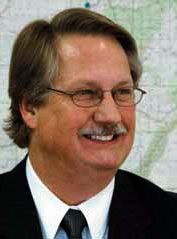
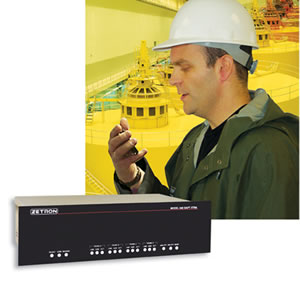 The Model 640 DAPT-XTRA Paging Terminal is a cost effective solution for small to medium-sized systems and private organizations offering a paging service based on bureau-type operator paging and/or direct telephone access. The 640 supports up to 1,500 users with up to 4 telephone lines. It also supports voice paging, voice prompts, talkback paging, and alphanumeric paging.
The Model 640 DAPT-XTRA Paging Terminal is a cost effective solution for small to medium-sized systems and private organizations offering a paging service based on bureau-type operator paging and/or direct telephone access. The 640 supports up to 1,500 users with up to 4 telephone lines. It also supports voice paging, voice prompts, talkback paging, and alphanumeric paging. Zetron's Remote Monitoring equipment provides monitoring and notification of unusual conditions and status changes. Messages are automatically transmitted over a radio or a public address system. Notification can be sent via speaker or radio announcement, telephone, cellular phone, or paging.
Zetron's Remote Monitoring equipment provides monitoring and notification of unusual conditions and status changes. Messages are automatically transmitted over a radio or a public address system. Notification can be sent via speaker or radio announcement, telephone, cellular phone, or paging.


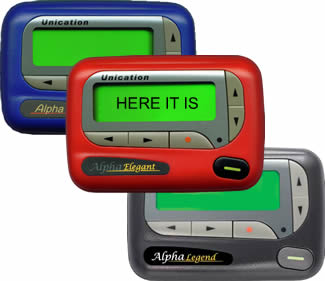
 NEW ALERT AND RINGTONE AMPLIFIER
NEW ALERT AND RINGTONE AMPLIFIER 

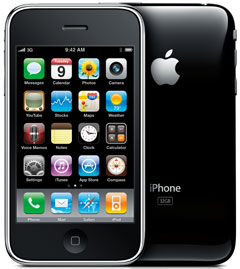 What’s perhaps most notable about Apple’s moves yesterday is the extent to which the company is now leaning heavily on software while simultaneously leveraging its existing hardware. The company avoided the redundancy and high production costs of the rumored iPhone Nano and will now run through its existing inventory of 3Gs at a recession-palatable price point.
What’s perhaps most notable about Apple’s moves yesterday is the extent to which the company is now leaning heavily on software while simultaneously leveraging its existing hardware. The company avoided the redundancy and high production costs of the rumored iPhone Nano and will now run through its existing inventory of 3Gs at a recession-palatable price point. 
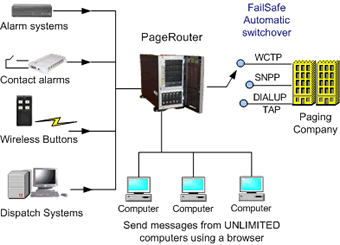


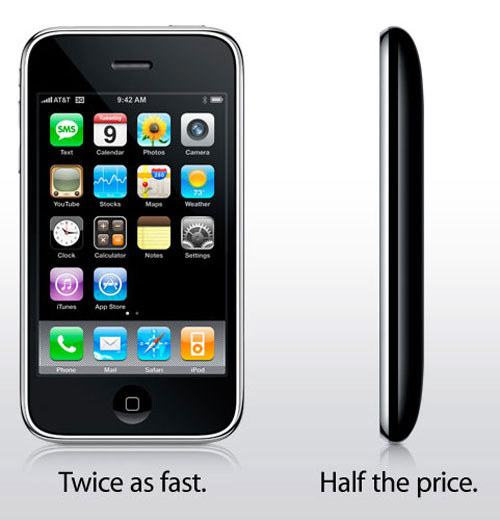

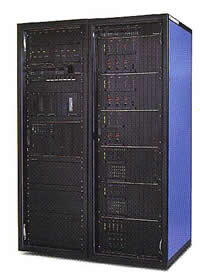

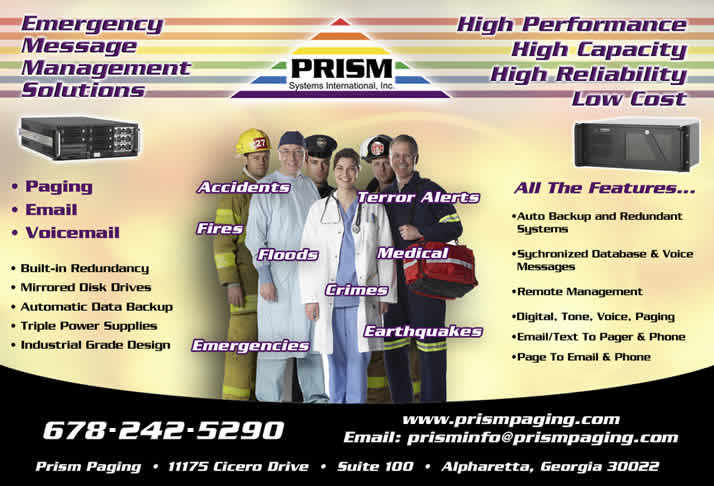


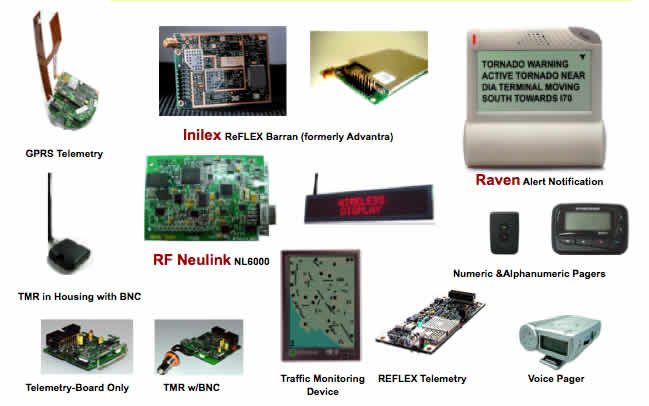
 HUNTSVILLE, AL (WAFF) - An incident has parents in a Huntsville community with their eyes open, and reminded similar facilities just how important and needed safety precautions really are.
HUNTSVILLE, AL (WAFF) - An incident has parents in a Huntsville community with their eyes open, and reminded similar facilities just how important and needed safety precautions really are.
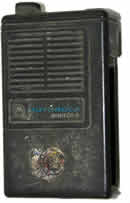
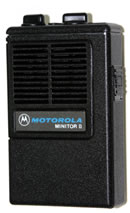



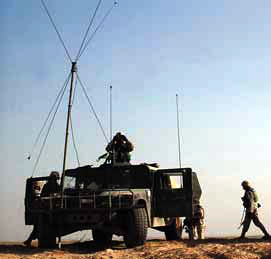 BY RHETT GROTZINGER
BY RHETT GROTZINGER  n that day the Space Data Corporation’s SkySite® network completed 5 years of continuous 24/7 operation. Flying a constellation of radio repeaters suspended below specially engineered weather balloons, Space Data delivers seamless radio coverage to enterprise and government users in New Mexico, Oklahoma, Texas and Louisiana.
n that day the Space Data Corporation’s SkySite® network completed 5 years of continuous 24/7 operation. Flying a constellation of radio repeaters suspended below specially engineered weather balloons, Space Data delivers seamless radio coverage to enterprise and government users in New Mexico, Oklahoma, Texas and Louisiana. 


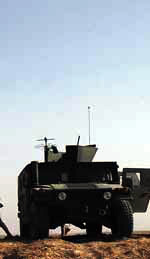 Once back on earth, the payload sends its GPS location to the NOC and that information is used to retrieve the payloads and utilize them in future launches. Over the 5 years the commercial SkySite network has been in continuous operation, Space Data has retrieved and re-used 90 percent of the radio payloads it has flown. Each of the communications payloads weighs approximately 6 pounds and meets FAA criteria for balloon borne payloads, thereby eliminating possible damage when they come back to earth.
Once back on earth, the payload sends its GPS location to the NOC and that information is used to retrieve the payloads and utilize them in future launches. Over the 5 years the commercial SkySite network has been in continuous operation, Space Data has retrieved and re-used 90 percent of the radio payloads it has flown. Each of the communications payloads weighs approximately 6 pounds and meets FAA criteria for balloon borne payloads, thereby eliminating possible damage when they come back to earth. 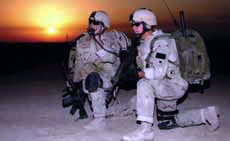 Space Data’s SkySite offers users the many advantages of satellite communications at a fraction of the high cost associated with satellite services. In its 5 years of continuous operation the SkySite commercial network has launched over 18,000 SkySite balloons. After launch the balloon ascends at approximately 1000 feet per minute and begins delivering wide area coverage just minutes after launch. Once at altitude, the SkySites will typically drift for up to 24 hours at altitudes between 65,000 and 85,000 feet where the high altitude winds are fairly light and stable.
Space Data’s SkySite offers users the many advantages of satellite communications at a fraction of the high cost associated with satellite services. In its 5 years of continuous operation the SkySite commercial network has launched over 18,000 SkySite balloons. After launch the balloon ascends at approximately 1000 feet per minute and begins delivering wide area coverage just minutes after launch. Once at altitude, the SkySites will typically drift for up to 24 hours at altitudes between 65,000 and 85,000 feet where the high altitude winds are fairly light and stable. 

















